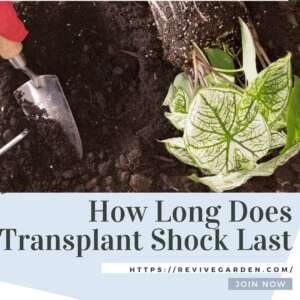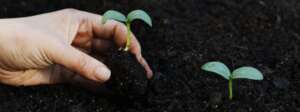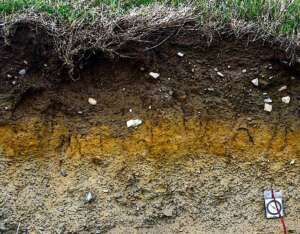Table of Contents
 Transplant shock is a potentially life-threatening condition after a transplant operation. Shock is an intense response to a sudden, significant change in the environment.
Transplant shock is a potentially life-threatening condition after a transplant operation. Shock is an intense response to a sudden, significant change in the environment.
In plants, shock can be caused by several factors, including moving from one room to another in the garden, getting fertilized with fresh soil, or being transplanted to a new pot.
Things that look worse before they look better. We are here to tell you that transplant shock will pass, and in this article, we’ll discuss how long it will last so that, hopefully, you’ll have some extra time on your side if you need it.
Duration And Recovery Process For Gardeners of a Transplant Shock Plant
When a plant undergoes transplant shock, it is subjected to stress and disruption due to being moved from one location to another. Gardeners often encounter transplant shock when they transplant seedlings or mature plants from pots or nurseries into the ground or different containers. The duration and recovery process for plants experiencing transplant shock can vary depending on several factors, including the type of plant, its overall health, the conditions during and after transplantation, and the care provided by the gardener.
Here’s an explanation of the available duration and recovery process:
Initial Shock Phase
Plants typically experience an initial shock phase immediately after transplanting. During this period, the plant may show signs of distress, such as wilting, drooping leaves, or yellowing. Depending on the plant species and its ability to adapt to new conditions, this phase can last anywhere from a few days to a few weeks.
Root Establishment
The recovery begins with establishing the plant’s root system in its new environment. Roots are crucial in absorbing water and nutrients, so they must adapt and grow in their new location. Gardeners can assist in properly watering, ensuring adequate drainage, and applying a suitable transplant fertilizer to support root development. The duration of this phase can vary significantly but typically takes a few weeks to a few months.
New Growth and Stabilization
As the plant’s root system establishes, you will see signs of new growth. The plant will produce fresh leaves, stems, and, in some cases, flowers. It’s important to note that the recovery process is incomplete at this stage, and the plant may still be vulnerable to extreme temperatures or inadequate light or water. The duration of this phase varies depending on the plant species and its growth rate. Some plants may recover fully within a few weeks, while others may take several months to regain their full vigor.
Monitoring and Care
Throughout recovery, monitoring the plant closely and providing the necessary care is crucial. This includes regular watering, ensuring proper sunlight exposure, protecting the plant from extreme weather conditions, and promptly addressing pest or disease issues. Gardeners should also avoid over-fertilizing the plant, as it can further stress the recovering roots.
Full Recovery
The plant should gradually regain its strength and vitality with time, appropriate care, and favorable conditions. The duration for full recovery varies significantly depending on the plant species, its overall health, and the extent of transplant shock. It could range from a few months for hardy plants to a year or more for more delicate or slow-growing species.
Cautions to Take During Planting and Recovery
During the planting and recovery process, there are several cautions and considerations that gardeners should keep in mind to minimize transplant shock and promote successful growth and recovery of the plants. Here’s an explanation of some important cautions to take during planting and recovery:
Handle Plants with Care
When handling plants, especially their delicate root systems, it’s essential to exercise caution to avoid damaging the roots or stems. Hold the plant by the root ball or container to prevent unnecessary stress.
Prepare the Planting Hole
Ensure the planting hole is appropriately prepared before transplanting. The hole should be wide and deep enough to accommodate the plant’s root system comfortably. Avoid compacting the soil at the bottom of the hole to allow for proper drainage.
Watering
Proper watering is crucial both during and after transplantation. Before transplanting, thoroughly water the plant to hydrate the roots and minimize shock. After planting, provide sufficient water to help settle the soil and ensure adequate moisture for root establishment. Avoid overwatering, as it can lead to root rot or other issues.
Timing
Timing is important when it comes to transplanting. Ideally, choose a time when the plant is in its dormant or less active growth phase. This reduces the stress on the plant and increases the chances of successful recovery. Avoid transplanting during extreme weather conditions, such as periods of intense heat or cold, as these can further stress the plant.
Avoid Excessive Fertilization
While fertilizing can provide nutrients to the plant, avoiding excessive fertilization during and immediately after transplanting is important. High concentrations of fertilizers can burn the tender roots and hinder the recovery process. Instead, opt for a mild transplant-specific fertilizer or organic alternatives.
Provide Adequate Shade and Protection
Newly transplanted plants are often more susceptible to sunburn and damage from strong winds. Provide temporary shade or protection using shade cloth, umbrellas, or other materials to shield the plants until they acclimate to their new environment.
Monitor and Adjust Care
Throughout the recovery process, closely monitor the plants for signs of stress, nutrient deficiencies, pests, or diseases. Adjust the care regimen accordingly, such as adjusting watering frequency, providing appropriate fertilization, or applying organic pest control methods.
Symptoms of Transplant Shock
When a plant undergoes transplantation, it can experience various symptoms indicating transplant shock. These symptoms occur due to the stress and disturbance caused to the plant’s root system during the process. Here are some common signs of transplant shock:
Wilting
Transplanted plants often exhibit wilting, where the leaves droop or limp. This occurs because the plant’s roots cannot absorb sufficient water to meet the plant’s needs.
Leaf Discoloration
Another noticeable symptom of transplant shock is the discoloration of leaves. They may turn yellow, brown, or even develop spots. This discoloration is a response to the stress the plant is experiencing.
Stunted Growth
Plants experiencing transplant shock may exhibit slow or stunted growth. The stress of transplantation affects the plant’s ability to allocate energy toward new growth and development.
Leaf Drop
In severe cases of transplant shock, plants may shed their leaves prematurely as a survival mechanism. This is the plant’s way of reducing water loss and conserving energy during a period of stress.
Delayed Blooming or Fruit Production
Transplant shock can also delay or inhibit the blooming or fruiting of plants. The energy typically used for reproductive processes is redirected towards recovery and reestablishing the root system.

Factors Affecting Transplant Shock Duration
The duration of transplant shock can vary from plant to plant and is influenced by several factors. Understanding these factors can help gardeners assess the recovery time and take appropriate measures to support the plant during this period. Here are some key factors that can affect the duration of transplant shock:
Environmental Factors
Temperature: Extreme temperatures, whether hot or cold, can prolong recovery. Plants may need help establishing their root systems and recovering properly in unfavorable temperature conditions.
Humidity: Low humidity levels can cause increased water loss through the leaves, exacerbating transplant shock. Adequate humidity levels can help plants recover more quickly.
Light Conditions: Insufficient or sudden exposure to intense light can impact the plant’s ability to photosynthesize and generate energy, prolonging recovery.
Plant-related Factors
Species: Different plant species have varying tolerance levels to transplant shock. Some plants are naturally more resilient and recover faster, while others may take longer to acclimate to the new environment.
Age: Younger plants generally recover more quickly from transplant shock than older, more established plants. Young plants have a better capacity to regenerate their root systems and adapt to the new conditions.
Root Development: The health and development of the plant’s root system before transplantation play a significant role in the recovery process. Plants with well-developed root systems tend to recover faster.
Overall Plant Health
Plants already stressed or weakened due to pests, diseases, nutrient deficiencies, or overwatering are more susceptible to transplant shock and may take longer to recover.
The overall vigor and vitality of the plant also contribute to the recovery duration. Healthy plants with robust growth and good nutrient uptake can bounce back more swiftly.
The Duration of Transplant Shock
The duration of transplant shock, or the time it takes for a plant to recover fully from the stress of transplantation, can vary depending on several factors. While it is difficult to provide an exact timeline, understanding the general process can help gardeners manage their expectations and provide the necessary care. Here are some key points regarding the duration of transplant shock:
- Immediate Response: Plants typically experience an initial shock response immediately after transplantation. This phase can last for a few days to a couple of weeks. During this time, the plant may exhibit signs of stress, such as wilting, leaf discoloration, and stunted growth.
- Acclimation Period: After the initial shock, plants enter an acclimation period. Depending on various factors, this phase can last anywhere from a few weeks to a few months. The plant gradually adjusts to the new environment, develops new root growth, and establishes itself in the new location.
- Recovery and Growth: As the plant acclimates and establishes its root system, signs of recovery become more evident. New growth, such as the emergence of healthy leaves, shoots, and roots, indicates that the plant is recovering from transplant shock. This recovery phase can range from several weeks to several months.
It’s important to note that the duration of transplant shock can be influenced by factors such as the plant species, overall health, environmental conditions, and the care provided during and after transplantation. Depending on specific circumstances, individual plants within the same species may also have varying recovery times.
During recovery, gardeners must provide optimal care and support to help the plant overcome transplant shock more efficiently. This includes regular watering, appropriate fertilization, monitoring for pests or diseases, and providing a suitable environment with proper lighting and humidity levels.
Gardeners should also practice patience and avoid making drastic changes to the plant’s conditions during recovery. Monitoring the plant’s progress and observing signs of healthy growth will help determine when the plant has fully recovered from transplant shock and is ready for regular care and maintenance.
Strategies to Minimize Transplant Shock
To minimize the impact of transplant shock on plants, gardeners can employ several strategies before, during, and after the transplantation process. These strategies reduce stress and promote successful adaptation to the new environment. Here are some effective techniques to minimize transplant shock:
Preparing Plants for Transplantation:
- Gradual Hardening-off: Gradually expose the plants to outdoor conditions over some time before transplantation. This helps the plants gradually adjust to temperature, light, and humidity changes.
- Root Pruning: Pruning the roots a few weeks before transplantation stimulates new root growth and helps the plant develop a denser and more robust root system.
Transplantation Techniques
- Handle with Care: When handling the plants during transplantation, avoid damaging the roots or causing unnecessary stress to the plant. Hold the plant by the root ball or container to minimize disturbance.
- Proper Timing: Choose the right time to transplant, typically during cooler periods or early morning or late afternoon when temperatures are milder. Avoid transplanting during extreme heat or cold.
Water Management
- Watering before Transplantation: Water the plant thoroughly a day or two before transplantation to ensure it is well-hydrated and less prone to dehydration.
- Watering after Transplantation: Provide adequate water to help the plant establish its roots. Ensure proper watering practices without overwatering, as excessive moisture can hinder root development.
Soil Preparation and Amendments
Proper Soil Composition: Prepare the transplant site with well-draining soil that suits the plant’s requirements. Ensure the soil is loose and friable, promoting healthy root growth.
Soil Amendments: Incorporate organic matter or compost into the soil to improve its structure, fertility, and moisture retention capacity. This provides a conducive environment for root development.
Providing Shade and Wind Protection
- Temporary Shade: Shield the transplanted plants from direct sunlight for a few days to reduce water loss through the leaves and prevent further stress.
- Wind Barriers: Shield the plants from strong winds by using temporary windbreaks or positioning them in areas with natural wind protection.

The Impact of Plant Species on the Transplant Process
Plant species play a significant role in the success of the transplant process. Each plant has unique characteristics, growth habits, and requirements, which can influence how it responds to transplantation. Gardeners can tailor their transplanting approach by considering these factors to ensure the best possible outcome.
It’s like Brussel Sprouts Companion Plants, where you need to know everything about Brussel plant and companion plants as well. The study is necessary.
Another thing that is necessary to consider if you don’t want your plant to face transplant shock is to find out the best homemade and chemical fertilizer or if it needs compost which you made yourself in your backyard, or you may also know about the plant’s species who like and dislike coffee grounds.
Here, we explore the importance of plant species and provide key considerations for a successful transplant.
1. Growth Habits and Root Systems
Plant species have varying growth habits and root systems, directly impacting their ability to withstand transplantation. Understanding the specific growth habit of a plant is essential for determining the appropriate time to transplant and the level of root disturbance it can tolerate. For example:
- Shallow-rooted plants: Some plants, such as annual flowers or shallow-rooted vegetables, have delicate and fibrous root systems. These plants are generally more susceptible to transplant shock and may require extra care.
- Deep-rooted plants: Trees, shrubs, and perennials with deep taproots have a more extensive root system. Transplanting these plants may require extensive digging and careful handling to preserve the root structure.
2. Seasonal Considerations
The season in which a plant is transplanted can significantly influence its ability to establish itself in the new environment. Consider the following seasonal factors:
- Spring is often considered an ideal time for transplanting as it provides a milder climate and ample time for plants to establish their roots before the hot summer months. Many plant species, including most perennials, are best transplanted during this season.
- Fall: Transplanting in the fall allows plants to establish their root systems before winter dormancy. Cooler temperatures and increased rainfall promote root development and reduce stress on the transplanted plants.
- Summer: Transplanting during the summer can be challenging due to the high temperatures and increased water demands. However, if necessary, it can be done with extra care, such as providing shade and ensuring consistent moisture levels.
3. Size and Maturity
The size and maturity of a plant also influence the transplant process. Young, smaller plants generally have a higher transplant success rate than larger, more established ones. Consider the following factors:
- Seedlings and young plants: Seedlings and young plants tend to have smaller root systems and are more adaptable to transplantation. They often recover more quickly and establish themselves more easily.
- Larger plants: Transplanting larger plants with well-developed root systems requires extra care to minimize root disturbance. Consider root pruning or using methods like burlap wrapping to help preserve the plant’s stability and minimize transplant shock.
Final words
Shock is a common phenomenon in transplant patients. This article looks at how long transplant shock lasts and some common symptoms. If you are a transplant patient or know someone who is, it is important to be aware of these symptoms and how to deal with them. For more information, open the link below.
